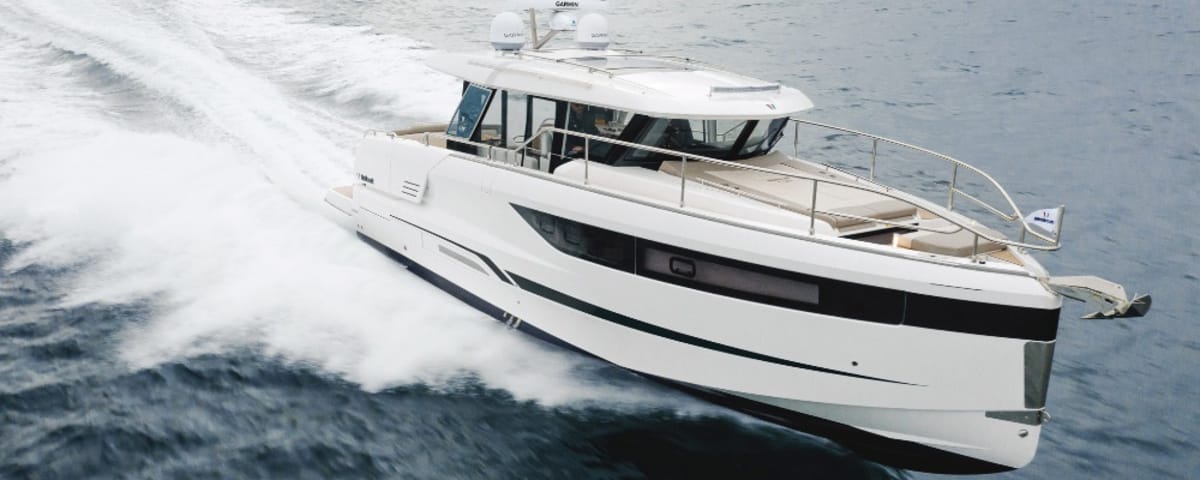The Evolution of Marine Radar: From Coastline Watchdog to AI-Enhanced Safety Net
Marine radar has come a long way from its rudimentary beginnings as a coastal surveillance tool. Initially deployed to monitor the English coastline, radar technology gradually evolved, finding its place on Admiralty ships by 1938. By the end of World War II, the technology had matured, enabling its use across land, sea, and air. However, it wasn’t until 1985 that yachts began to widely adopt radar, primarily due to the significant power consumption and bulky equipment associated with earlier models.
The advent of liquid crystal displays (LCDs), coupled with advancements in daylight-readable imaging and antenna miniaturization, paved the way for radar systems to be installed on a broader range of recreational vessels, both sail and motor-powered.
The Digital Revolution: Color, Computers, and Connectivity
The early 2000s witnessed a surge in the integration of computer technology and electronic charting, further propelling radar development. Monochrome LCD screens gave way to color displays, and dedicated radar units were progressively replaced by multifunction monitors. Today, the focus has shifted from standalone radar systems to multifunction displays, primarily serving as chartplotters. Users can now connect radar antennas, sounders, and other onboard instruments to a single color monitor.
Despite these advancements, the connection between the antenna and the radar unit remained wired until recently. Furuno addressed this limitation by introducing a Wi-Fi radar system. This model, derived from the DRS4D radome series, incorporates a module that enables wireless communication with iPhones or iPads.
From Magnetron to Pulse Compression: A Technological Leap
Traditionally, radar systems relied on a magnetron, housed within the antenna’s radome, to transmit and receive signals. This critical component, while well-understood, was fragile, energy-intensive, and required a warm-up period. To overcome these drawbacks, manufacturers have transitioned to pulse compression technology (Doppler radar). This approach offers several advantages, including instant start-up, reduced power consumption, and sharper image resolution, allowing for better target differentiation with color-coded displays (e.g., red indicating a collision risk). Furthermore, pulse compression has facilitated the development of new functionalities.
New Features and Capabilities
Pulse compression technology has unlocked a range of new features, including:
- Tracking of multiple targets (up to 100)
- Dual-range display
- Instant identification of potentially dangerous targets with color-coded alerts
- Enhanced short-range detection
- Improved storm detection
- Collision alarms
- Precise and automatic detection of feeding birds for anglers
What the Market Offers
Leading manufacturers such as Furuno, Navico (Simrad, Lowrance, B&G), Garmin, and Raymarine have embraced pulse compression technology. Older magnetron-based models are disappearing from 2025 catalogs. Key features across brands include:
- Target tracking, identifying over 100 targets and highlighting potentially dangerous ones in red.
- RezBoost beam sharpening for clearer detection.
- Bird mode for fishermen.
- Dual-range mode for viewing both near and far targets.
- Radar image overlay on charts.
Specific Models and Features
Furuno
Furuno offers the SOLID-STATE DRS2D-NXT and DRS4D-NXT Doppler radars with pulse compression, featuring ranges up to 48 nautical miles. The DRS4W Wi-Fi model allows for wireless connectivity with iPads and iPhones.
Navico (Simrad, Lowrance, B&G)
Navico’s Simrad, Lowrance, and B&G brands offer Halo radar models with ranges from 24 to 48 nautical miles. A key feature is the rapid antenna rotation (60 rpm) for quick detection of nearby targets. Simrad Yachting’s Halo 2000 and Halo 3000 models include AutoTrack™, which automatically detects, tracks, and prioritizes moving vessels and other targets.
Raymarine
Raymarine’s Quantum CHIRP and Doppler Quantum 2 models offer Wi-Fi connectivity and color-coded target identification to assess collision risk.
Garmin
Garmin’s GMR Fantom 18x/24x models use solid-state technology (Doppler effect) and offer a range of up to 48 nautical miles, with the ability to detect targets close to the boat. An energy-saving function allows for power adjustment based on needs.
SEA.AI: A Complementary Technology
SEA.AI (formerly OSCAR) combines optical sensors and artificial intelligence to detect and identify objects in the water that could pose a collision threat. Unlike radar, which detects relatively large objects, SEA.AI detects objects of all sizes, day and night, including logs, containers, buoys, marine animals, and small vessels. The system consists of a vision unit mounted on the masthead and a processing unit below. The camera captures optical and thermal images, which are then compared to SEA.AI’s database to determine if an object represents a collision threat. A new product, WatchKeeper, is slated for release soon.
Key Considerations When Upgrading
Older magnetron radar systems were self-contained units with a dedicated monitor. Newer pulse compression systems process the signal at the antenna and transmit it to a multifunction display via a smaller cable. If you already have a multifunction display with a radar input, it can only receive an antenna from the same brand. If you don’t have a multifunction display, it should be your first purchase. Choose a model with an NMEA 2000 interface to access engine data, navigation data, and entertainment devices. Before making a purchase, consider your existing equipment and future installation plans.
Enjoyed this post by Thibault Helle? Subscribe for more insights and updates straight from the source.


